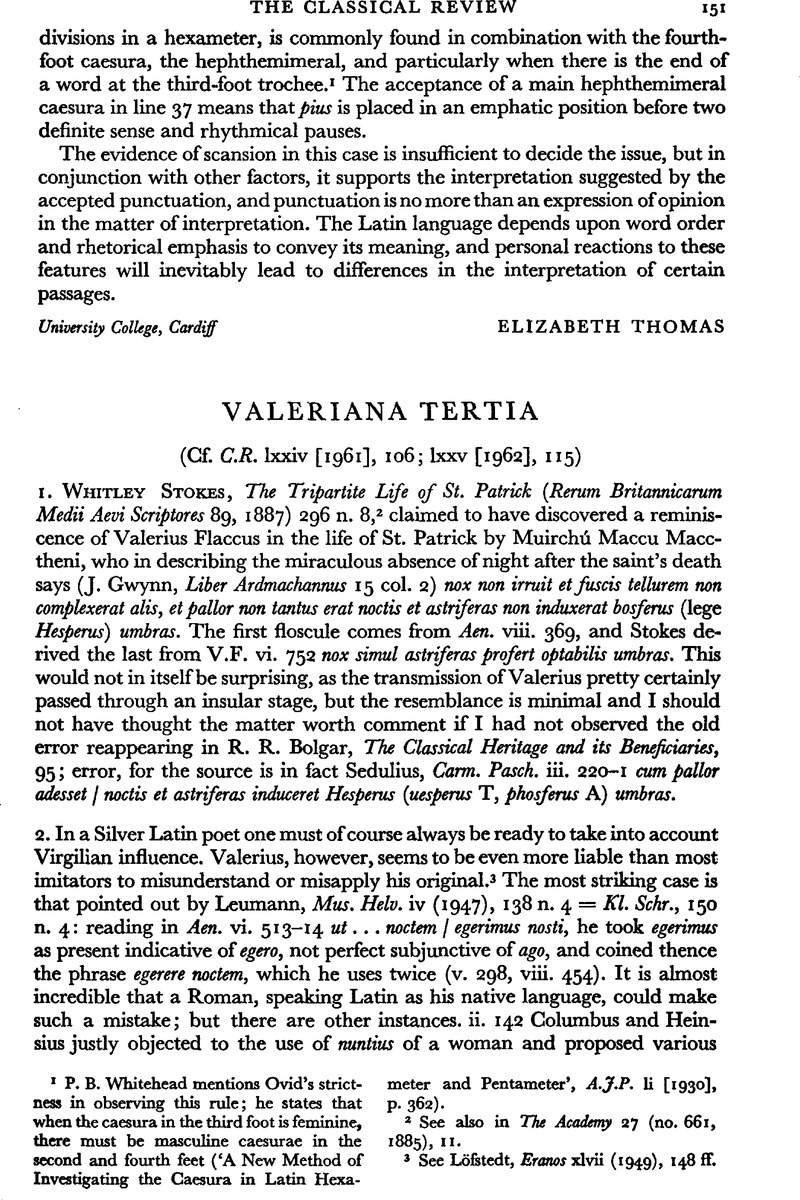No CrossRef data available.
Published online by Cambridge University Press: 27 February 2009

page 151 note 1 P. B. Whitehead mentions Ovid's strictness in observing this rule; he states that when the caesura in the third foot is feminine, there must be masculine caesurae in the second and fourth feet (‘A New Method of Investigating the Caesura in Latin Hexa-meter and Pentameter’, A.J.P. li [1930], p. 362).
page 151 note 2 See also in The Academy 27 (no. 661, 1885), 11.
page 151 note 3 See Löfstedt, Eranos xlvii (1949), 148 ff.
page 152 note 1 Langen doubtless recalled with amusement that Madvig (Adv. Crit. ii. 32) had castigated Ladewig for this very mistake.
page 152 note 2 See, e.g., Schmalz, B.P.W.29 (1909), 27; van Wageningen, ibid. 36 (1917), 1127; A. J. Bell, The Latin Dual and Poetic Diction, 123; D. Daube, Forms of Roman Legislation, 65.